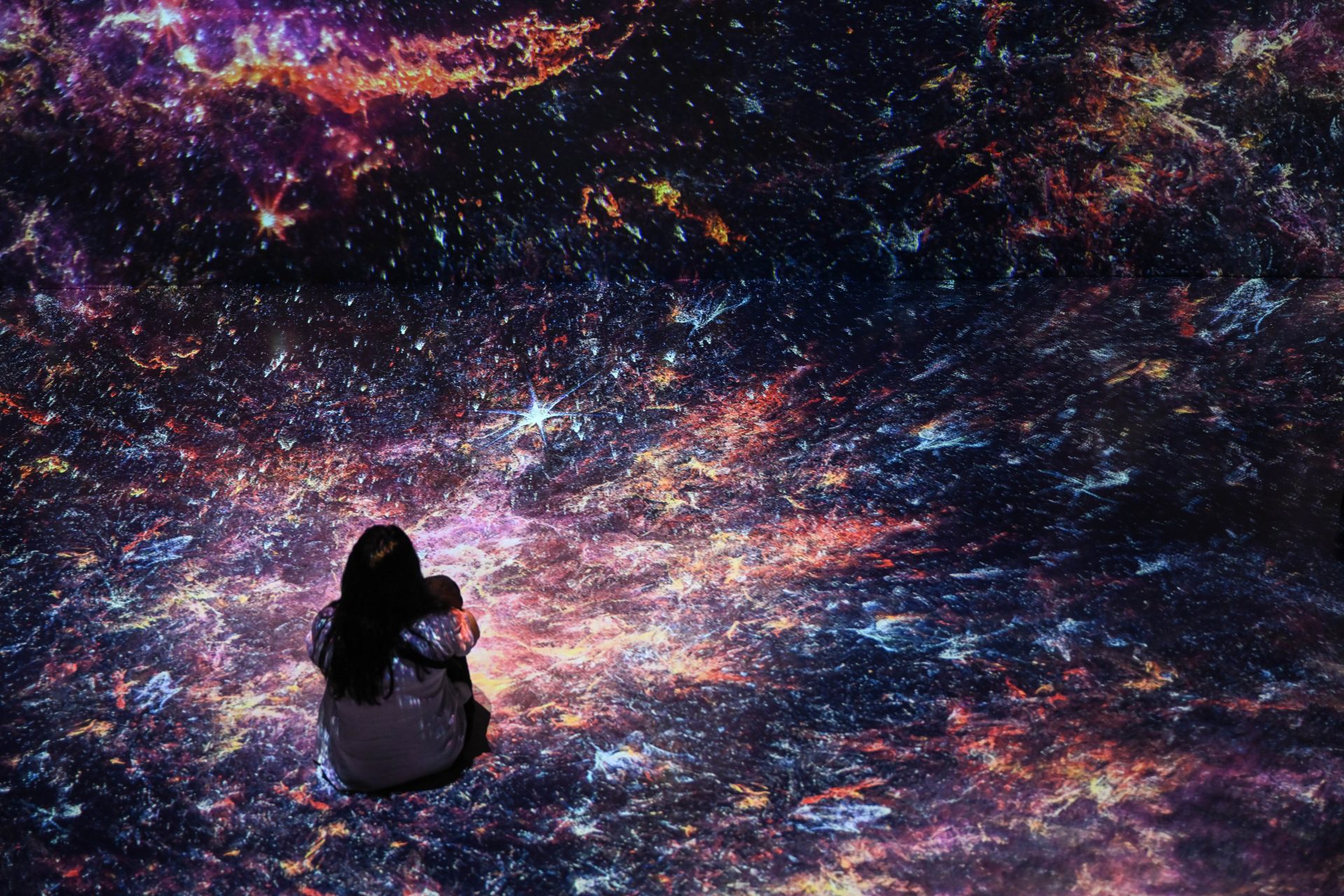See the mind-blowing images the James Webb Space Telescope took of 19 spiral galaxies
The James Webb Space Telescope is an amazing piece of technology and it has allowed researchers to take some very remarkable pictures since it was sent up into space. However, the best images the telescope has ever taken were released at the beginning of 2024.
The James Webb Space Telescope (JWST) captured shots of nineteen images of face-on spiral galaxies close to our solar system and released them to the public in January 2024. Each of the images offered a never-before-seen look at some of our closest nd most intricate cosmic neighbors.
The images were taken as part of a longstanding project known as the Physics at High Angular Resolution in Nearby Galaxies (PHANGS) program. Pictured is a collection of all the images released.
Photo Credit: NASA, ESA, CSA, STScI, Janice Lee (STScI), Thomas Williams (Oxford), PHANGS Team
A news release from NASA commented the program is supported by one hundred and fifty international astronomers and provided vital missing pieces to the puzzle of our universe. Pictured is NGC 4254.
Photo Credit: NASA, ESA, CSA, STScI, Janice Lee (STScI), Thomas Williams (Oxford), PHANGS Team
“Webb’s new images are extraordinary,” said Janice Lee, a project scientist for strategic initiatives at the Space Telescope Science Institute in Baltimore. Pictured is an image of the spiral galaxy NGC 628, which is 32 million light-years away.
Photo Credit: NASA, ESA, CSA, STScI, Janice Lee (STScI), Thomas Williams (Oxford), PHANGS Team
“They’re mind-blowing even for researchers who have studied these same galaxies for decades,” Lee added, and she wasn’t wrong. In this image, you can see a split between data captured by the Hubble Space Telescope and the JWST of NGC 628.
Photo Credit: NASA, ESA, CSA, STScI, Janice Lee (STScI), Thomas Williams (Oxford), PHANGS Team
“Bubbles and filaments are resolved down to the smallest scales ever observed, and tell a story about the star formation cycle,” Lee continued. Pictured is NGC 1612.
Photo Credit: NASA, ESA, CSA, STScI, Janice Lee (STScI), Thomas Williams (Oxford), PHANGS Team
However, the new images caught by the JWST included information that was captured by the telescope in ultraviolet, visible, and radio light according to NASA. The image above is of NGC 1300 and it shows the capabilities of the JWST in all their glory.
Photo Credit: NASA, ESA, CSA, STScI, Janice Lee (STScI), Thomas Williams (Oxford), PHANGS Team
This image of NGC 1087 shows a spiral galaxy that is 80 million light years away from our planet but perfectly reveals millions of little blue lights, lights that are very distant stars captured in the data that JWST collected on the galaxy.
Photo Credit: NASA, ESA, CSA, STScI, Janice Lee (STScI), Thomas Williams (Oxford), PHANGS Team
“I feel like our team lives in a constant state of being overwhelmed – in a positive way – by the amount of detail in these images,” commented University of Oxford postdoctoral researcher Thomas Williams. Pictured NGC 1566; it is 60 million light years away.
Photo Credit: NASA, ESA, CSA, STScI, Janice Lee (STScI), Thomas Williams (Oxford), PHANGS Team
NASA noted that the astronomers who captured these galaxies were amazed by what they saw when the final images were revealed. Of particular importance was the detail of dust and gas, perfectly exemplified by this image of NGC 2835.
Photo Credit: NASA, ESA, CSA, STScI, Janice Lee (STScI), Thomas Williams (Oxford), PHANGS Team
Ohio State University Professor of Astronomy Adam Leroy explained that astronomers think of the holes you’re seeing in the images “like waves” and added that “their spacing tells us a lot about how a galaxy distributes its gas and dust.” Pictured is NGC 3351.
Photo Credit: NASA, ESA, CSA, STScI, Janice Lee (STScI), Thomas Williams (Oxford), PHANGS Team
Astronomers are hoping to learn a lot from the images and the study of the structures that make up these spiral galaxies. What might the mysteries of galaxy NGC 4321 hold for humanity?
Photo Credit: NASA, ESA, CSA, STScI, Janice Lee (STScI), Thomas Williams (Oxford), PHANGS Team
NASA reported that the new data gathered by the JWST will help us better understand how galaxies build, maintain, and stop star formation. It would be interesting to find out how NGC 4535 got its interesting shape.
Photo Credit: NASA, ESA, CSA, STScI, Janice Lee (STScI), Thomas Williams (Oxford), PHANGS Team
NASA also pointed out that there are many avenues that researchers can pursue in the quest to better understand galaxies. However, the data being compiled by the JWST is providing astronomers with a great start to their hunt for more knowledge. Pictured is NGC 1385.
Photo Credit: NASA, ESA, CSA, STScI, Janice Lee (STScI), Thomas Williams (Oxford), PHANGS Team
“Stars can live for billions or trillions of years… By precisely cataloging all types of stars, we can build a more reliable, holistic view of their life cycles,” explained Leroy. But what will this image of NGC 1512 each us?
Photo Credit: NASA, ESA, CSA, STScI, Janice Lee (STScI), Thomas Williams (Oxford), PHANGS Team
At the time the images were released, the PHANGS program had collected a catalog of data on 100,000-star clusters that was released in conjunction with the nineteen new images of spiral galaxies within our cosmic neighborhood. Pictured in NGC 1433.
Photo Credit: NASA, ESA, CSA, STScI, Janice Lee (STScI), Thomas Williams (Oxford), PHANGS Team
“The amount of analysis that can be done with these images is vastly larger than anything our team could possibly handle,” University of Alberta in Edmonton physics professor Erik Rosolowsky was quoted as saying. Pictured is NGC 7496.
Photo Credit: NASA, ESA, CSA, STScI, Janice Lee (STScI), Thomas Williams (Oxford), PHANGS Team
“We’re excited to support the community so all researchers can contribute,” Rosolowsky added, and it will be interesting to see what kinds of groundbreaking discoveries will be made by the people digging through this gigantic catalog of data. Pictured is NGC 3627.
Photo Credit: NASA, ESA, CSA, STScI, Janice Lee (STScI), Thomas Williams (Oxford), PHANGS Team
Reuters reported that the data captured by the release was taken by James Webb’s Near-Infrared Camera (NIRcam) and Mid-Infrared Instrument (MIRI). Pictured is NGC 4303.
Photo Credit: NASA, ESA, CSA, STScI, Janice Lee (STScI), Thomas Williams (Oxford), PHANGS Team
The closest of the galaxies captured is roughly 15 million light-years away from Earth. Known as NGC 5068, it's a beautiful cluster of gas and dust that is like nothing ever viewed before.
Photo Credit: NASA, ESA, CSA, STScI, Janice Lee (STScI), Thomas Williams (Oxford), PHANGS Team
NGC 1365 was the galaxy captured furthest from Earth at about 60 million light-years. Reuters reported that "a light year is the distance light travels in a year, 5.9 trillion miles (9.5 trillion km)."
Photo Credit: NASA, ESA, CSA, STScI, Janice Lee (STScI), Thomas Williams (Oxford), PHANGS Team
More for you
Top Stories



































